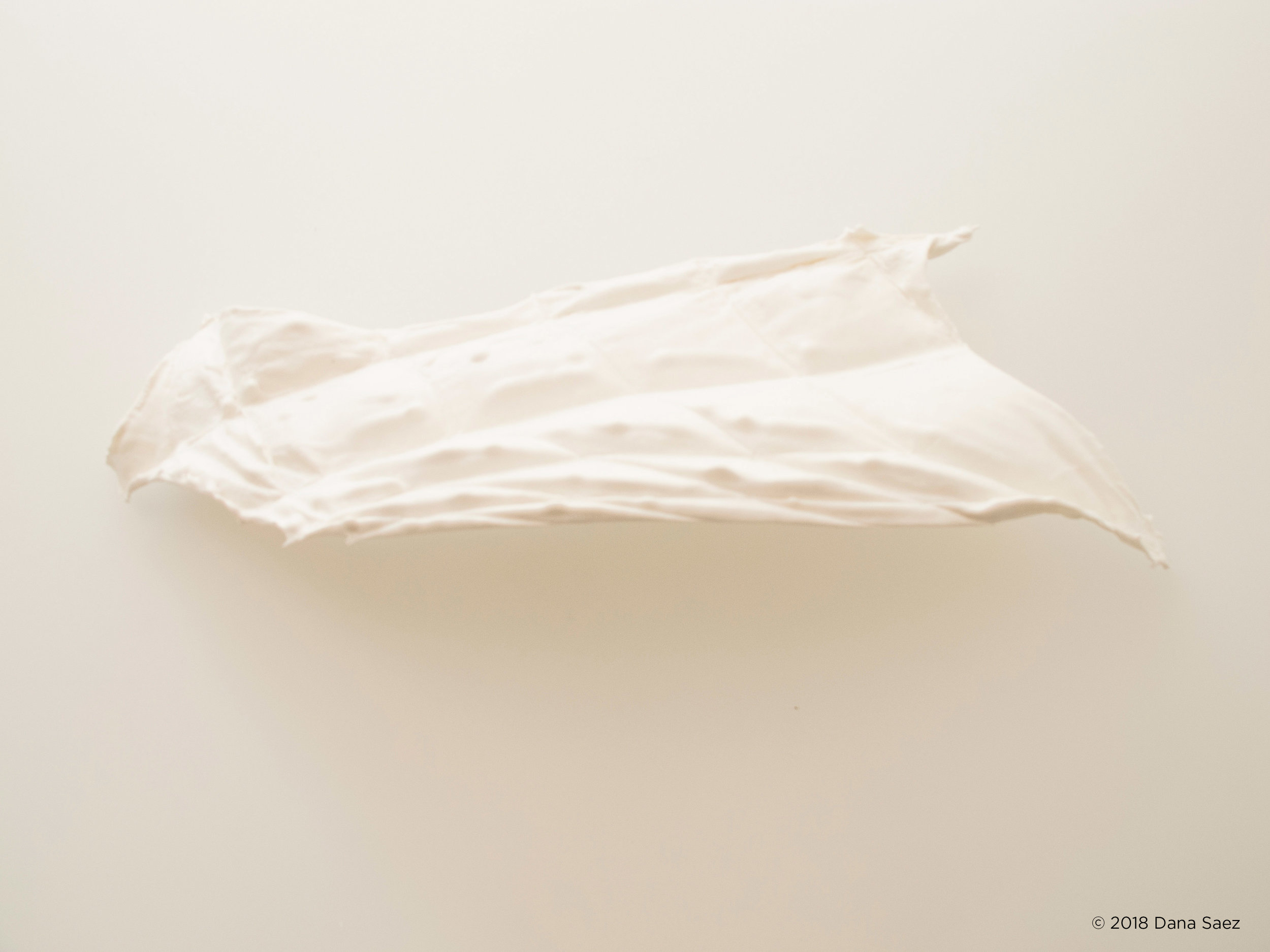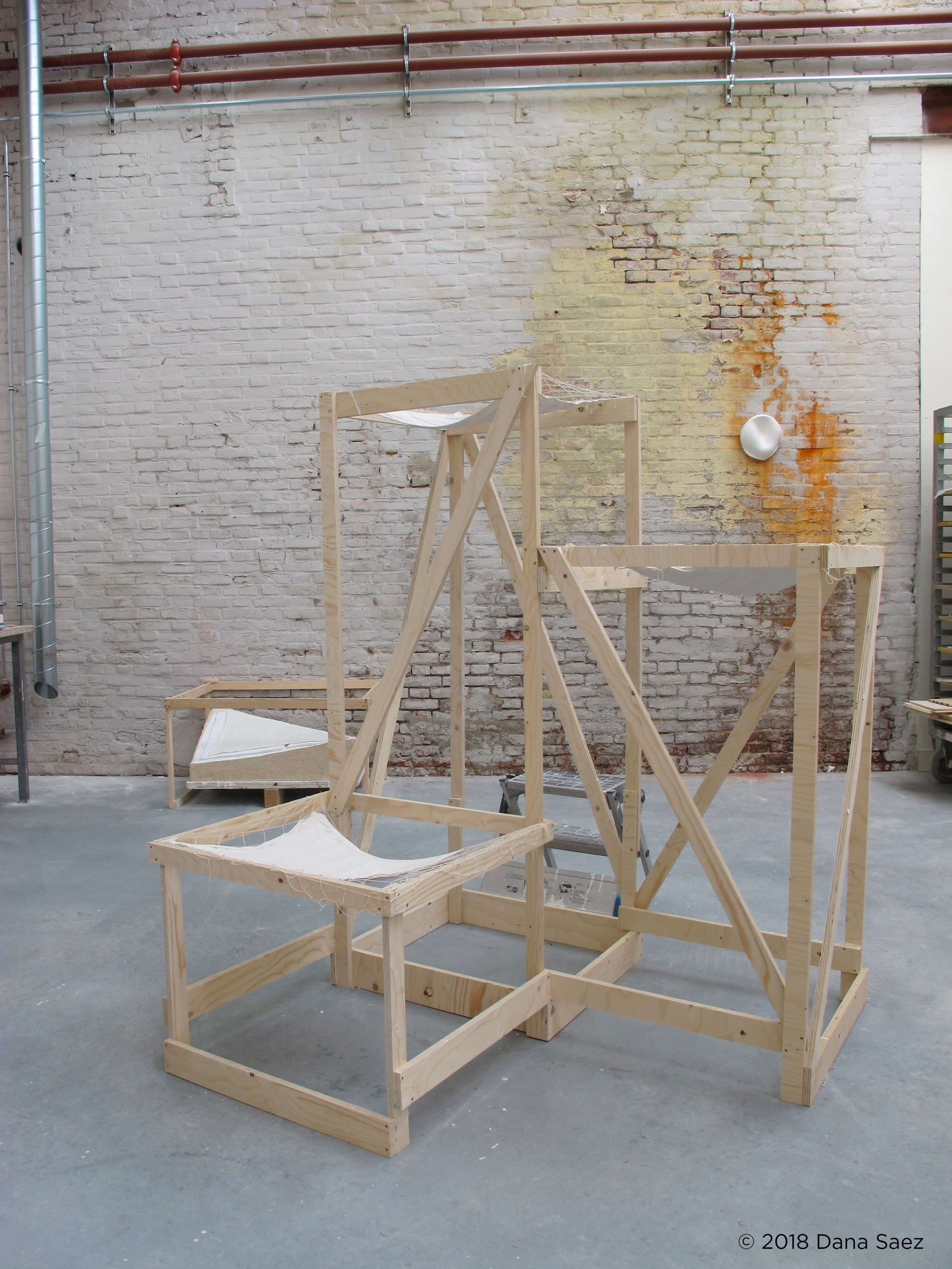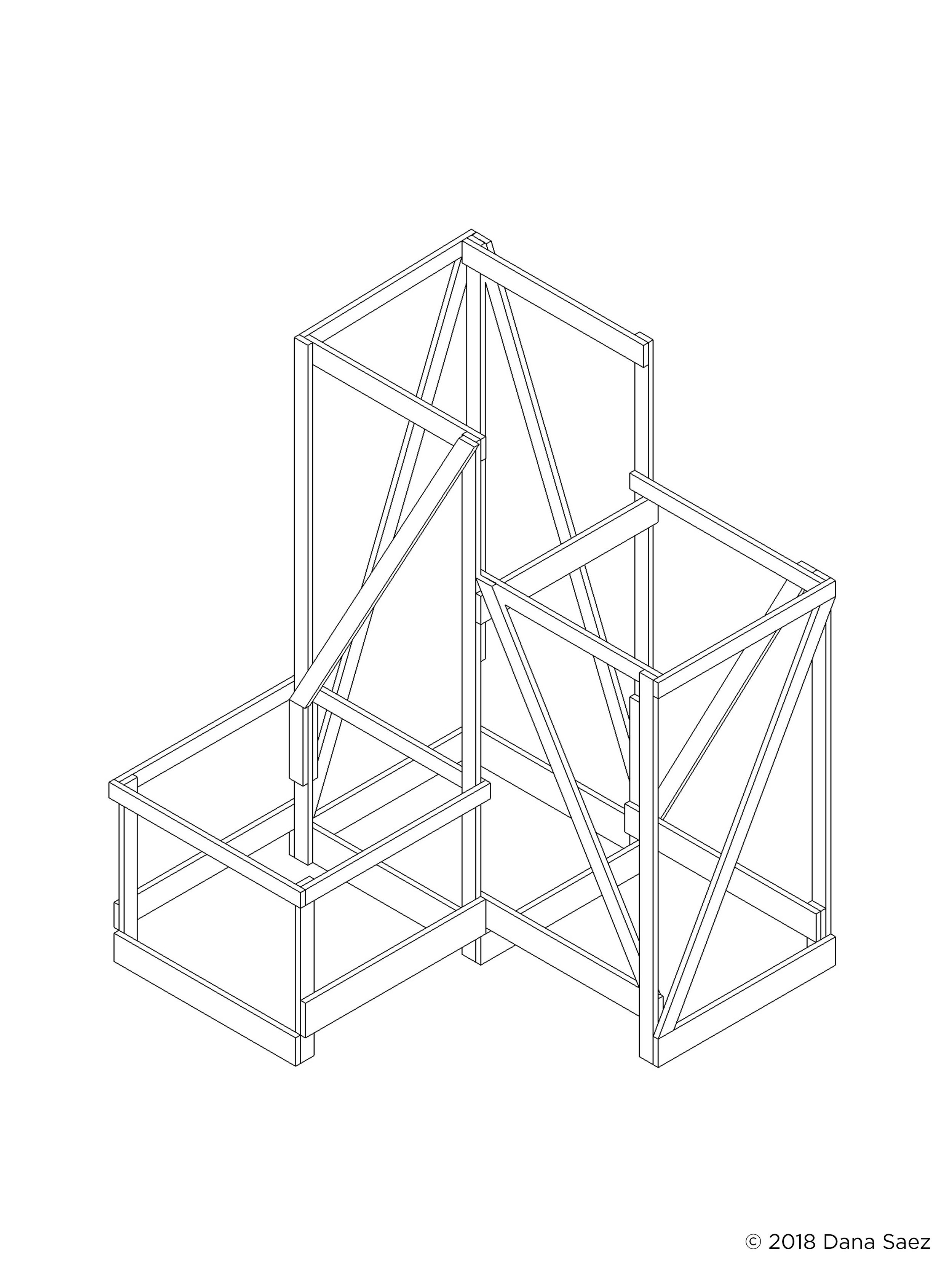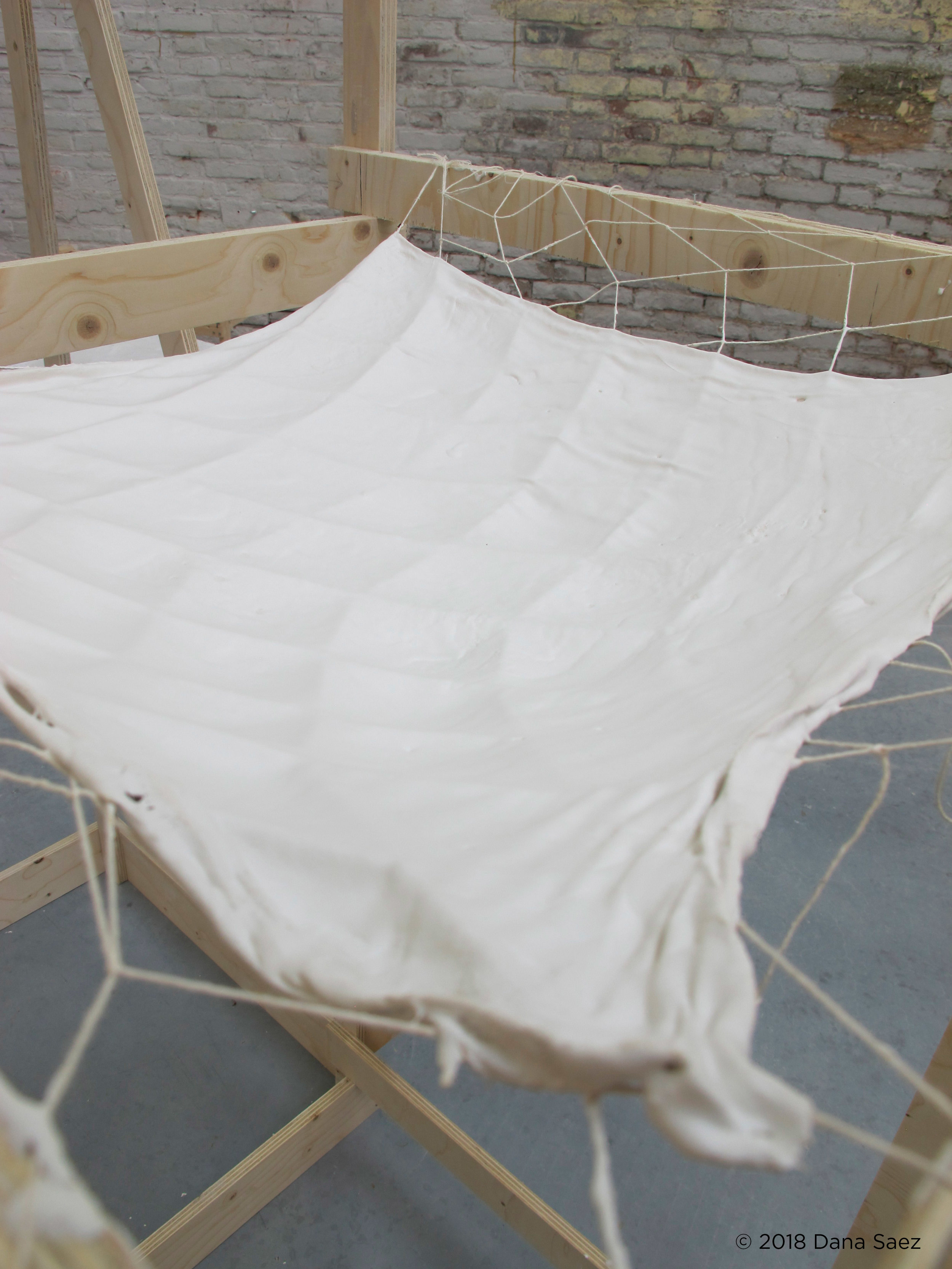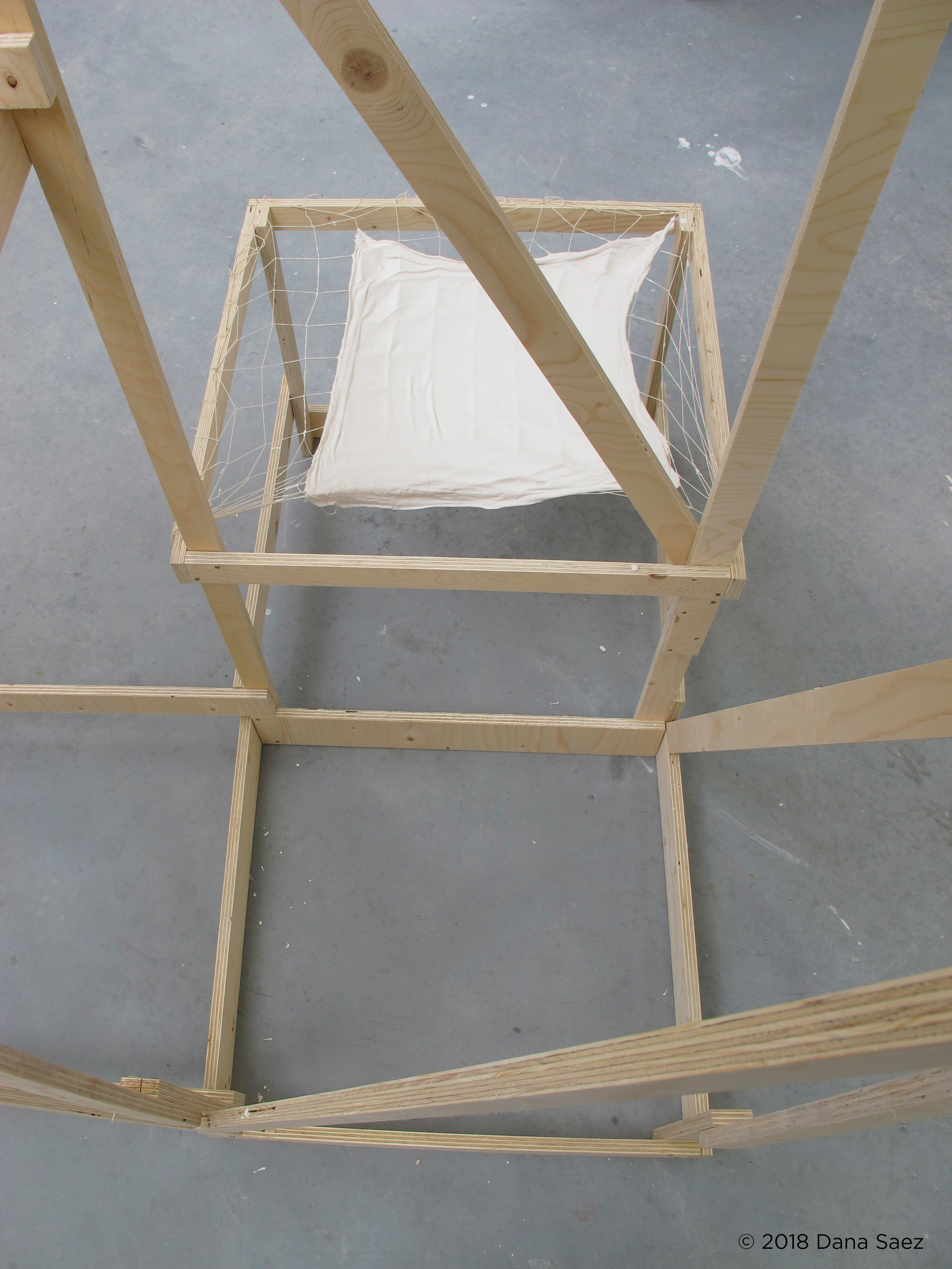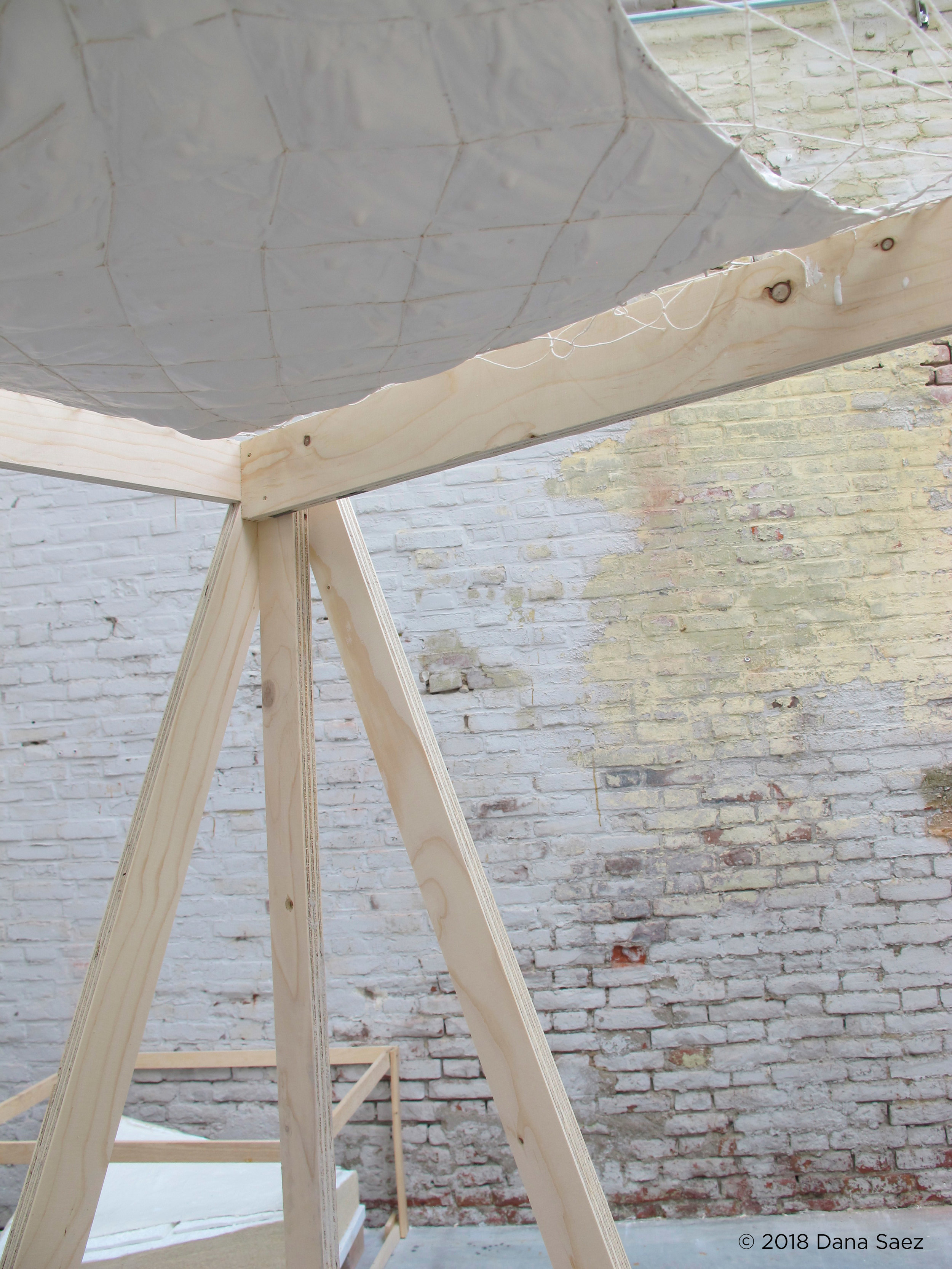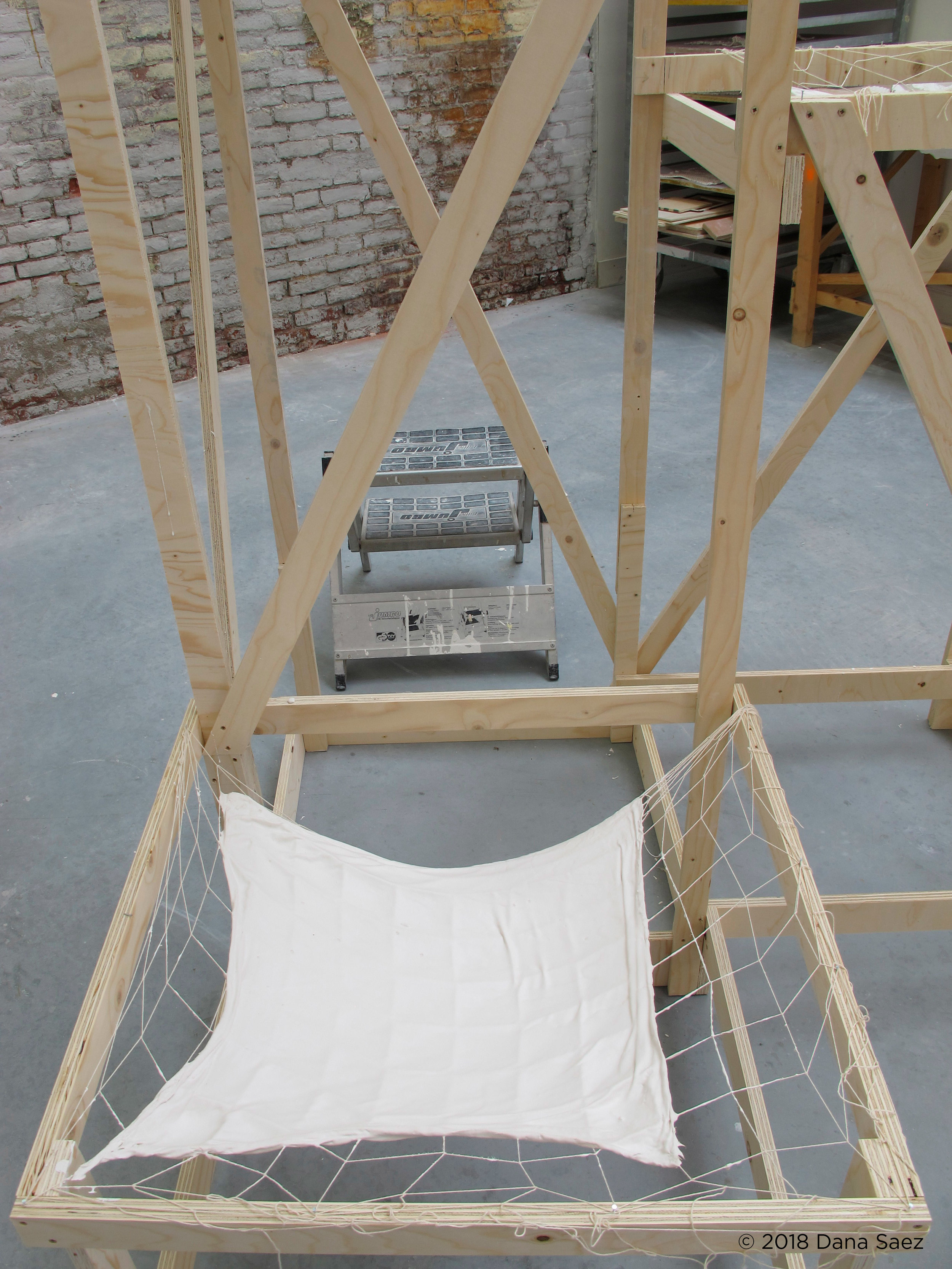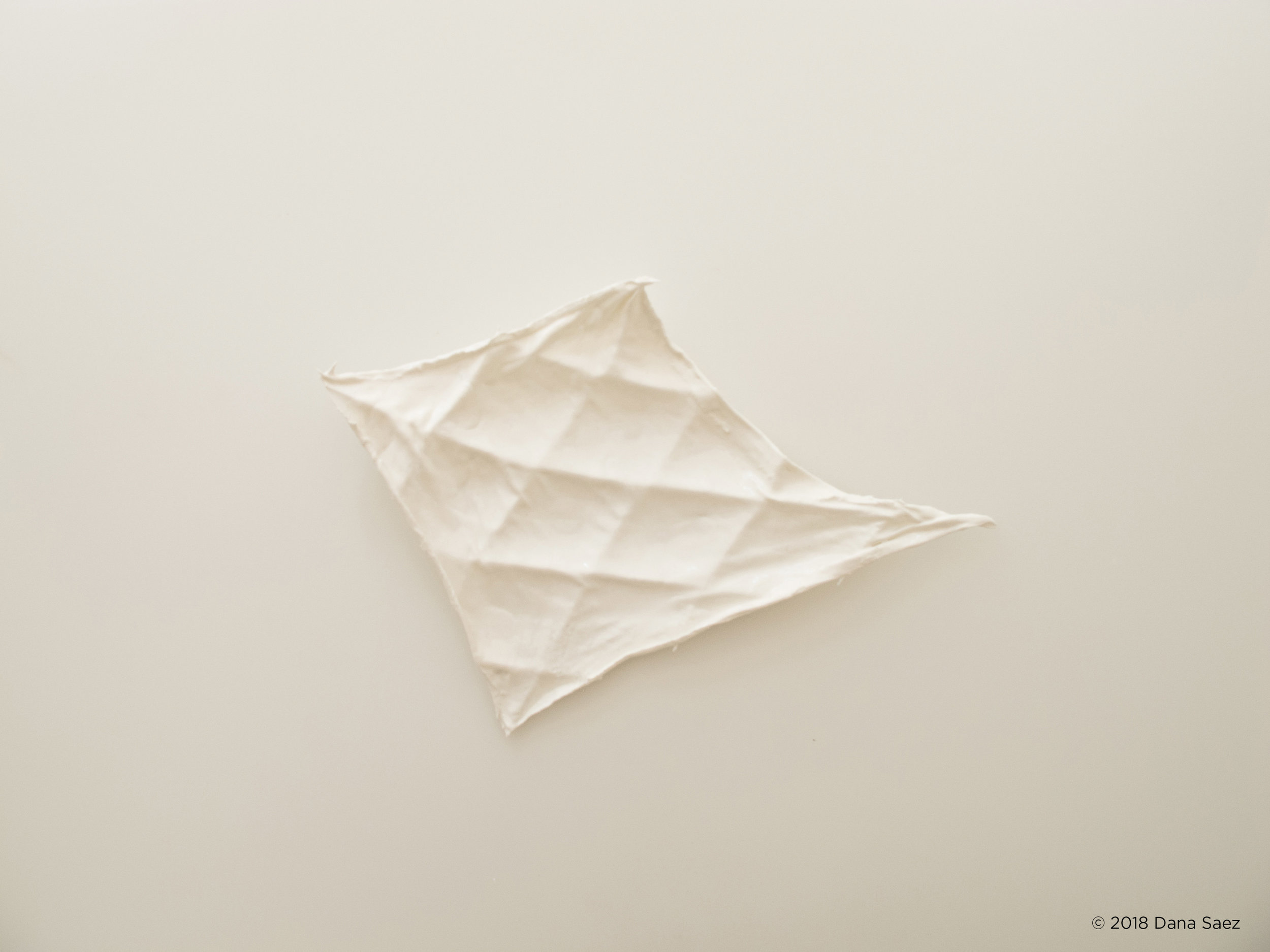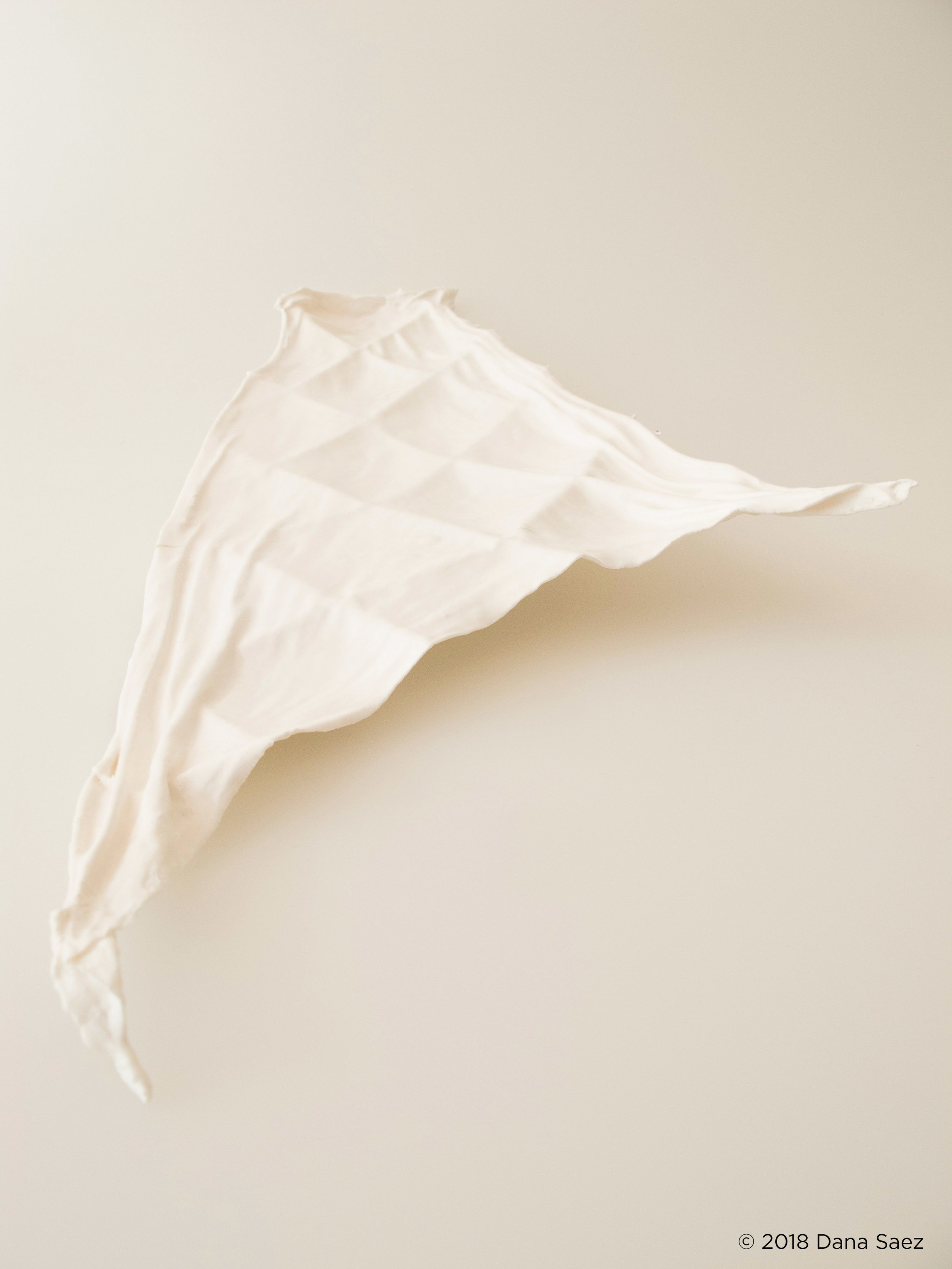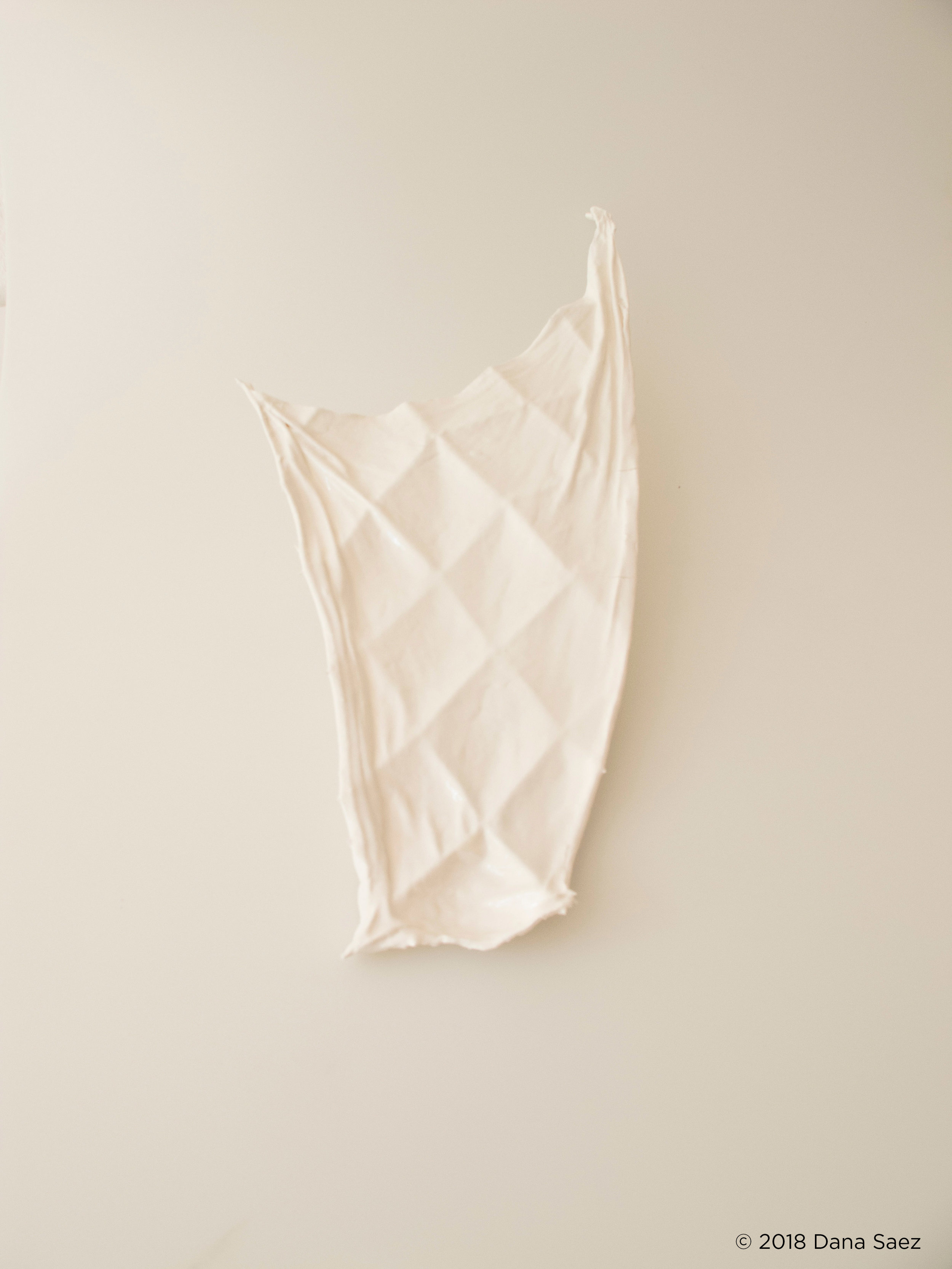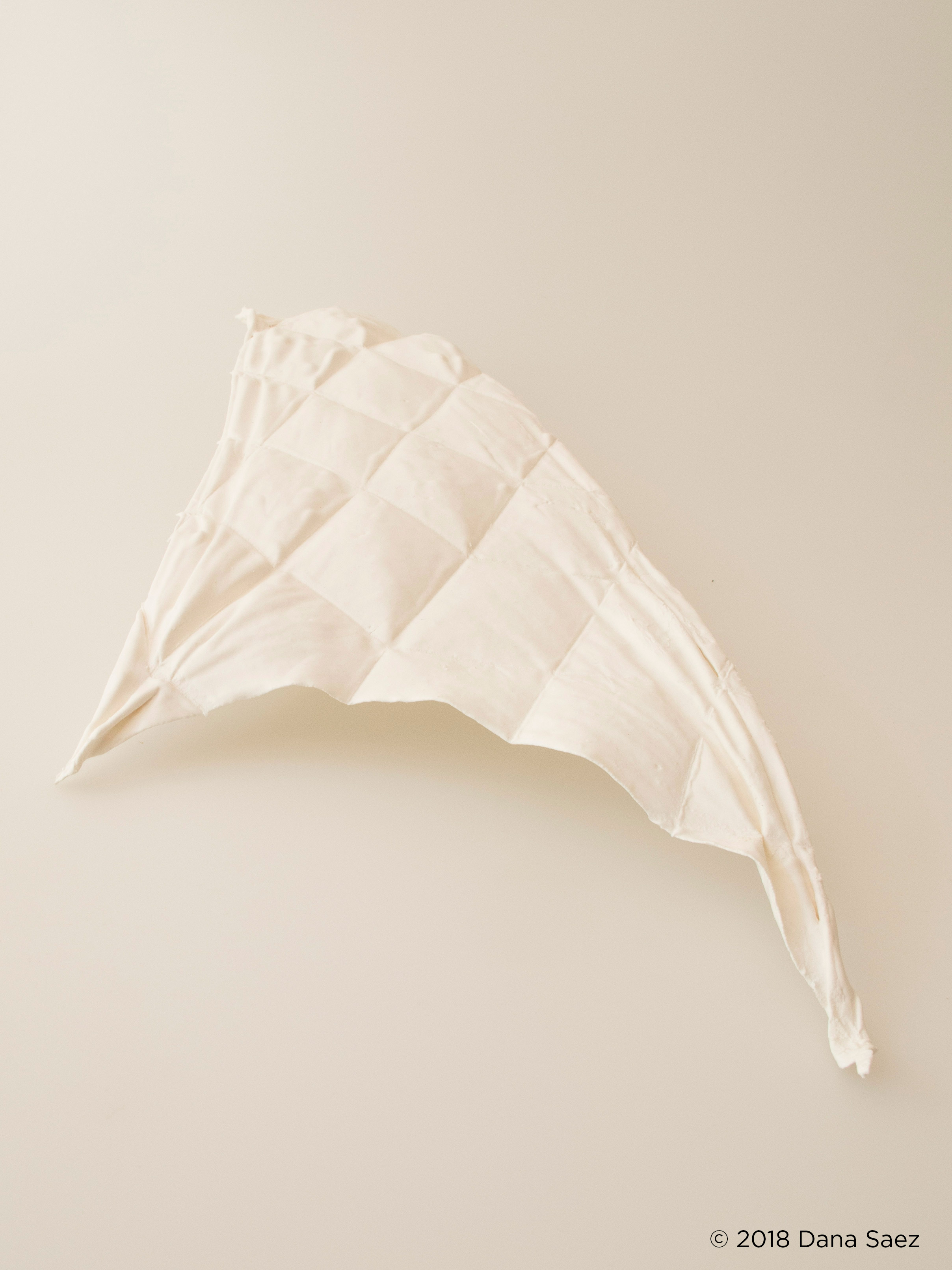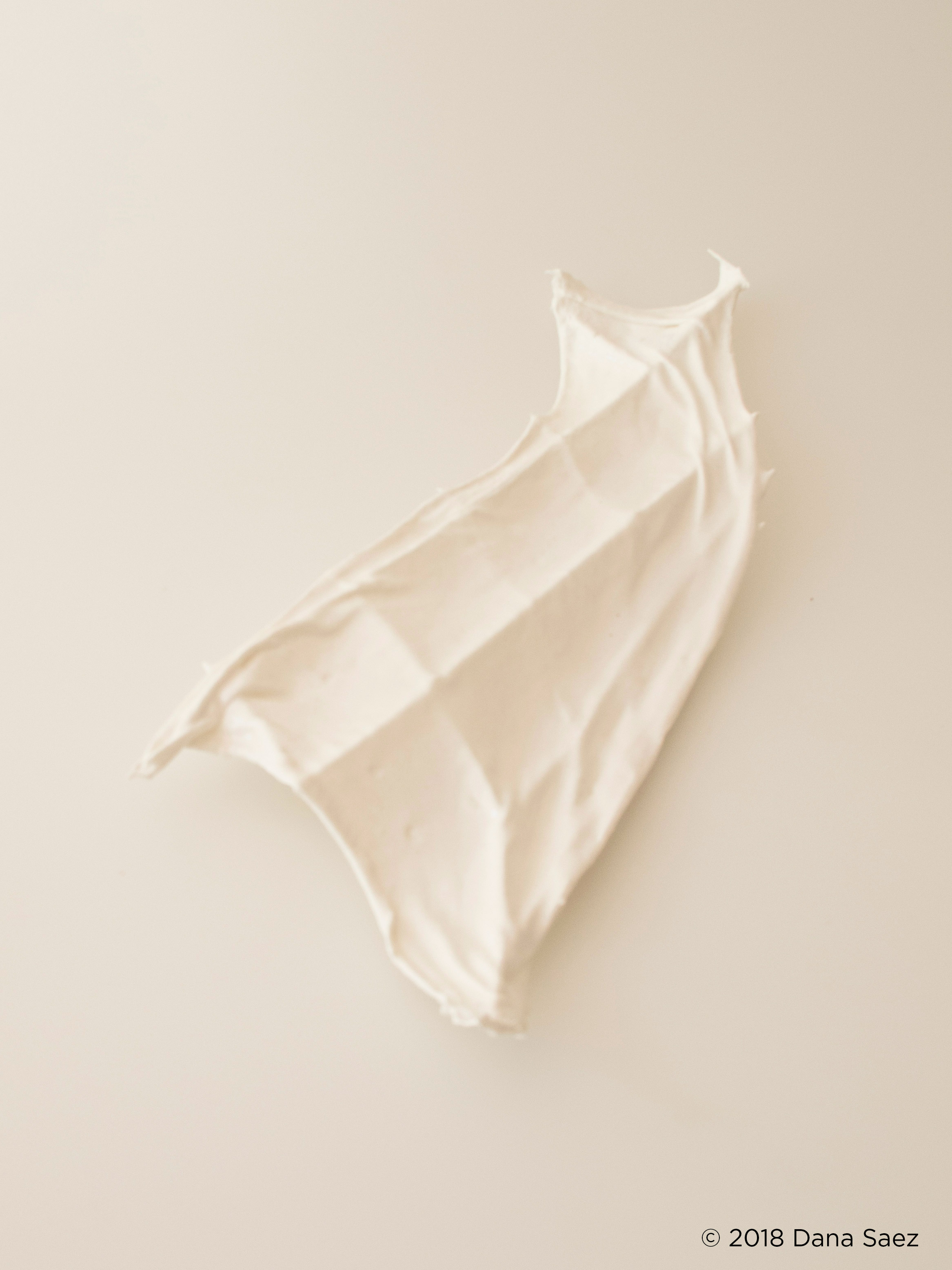EXTENDED TEXTILE CAPABILITIES
European Ceramic Work Centre, the Netherlands, 2018
After the first experience working with textiles and ceramics at the European Ceramic Work Center (EKWC), a second review of the mutually influenced relationships between the two materials was necessary.
‘Extended textile capabilities’ presented the opportunity to invert the common deployment conditions of textile elements in architecture. Typically, textiles require a support structure that forces the material to behave in a certain way: usually through tensile forces.
This project aims to use textiles as a support structure, providing substrate to another material, in this case, porcelain. The textile’s support qualities are activated in the presence of its supported element. This not only enables its architectural function, but provides a distinctive textural and material presence.
A modular temporary wood installation was built as a part of the design process. The intention was to use this device as a flexible framework from which the textile could be modelled. This framework was specifically designed to provide several shaping possibilities in direct relation to the human body. In this regard, the frame was both specific and generic, enabling multiple instances for the experimentations.
The final shape of the porcelain-textile composite depends on two main factors: the textile position in relationship to the framework and its own gravitational deformation after being in contact with the ceramics.
There is a mutually beneficial relationship between textile and porcelain; porcelain provides a shaping force to the textile, while the textile performs structurally as well as a disposable material during the burning process. The performance of both materials changes in every experiment depending on the type of connections between the framework and the textile, the thickness of the fabric, and density of the porcelain.


